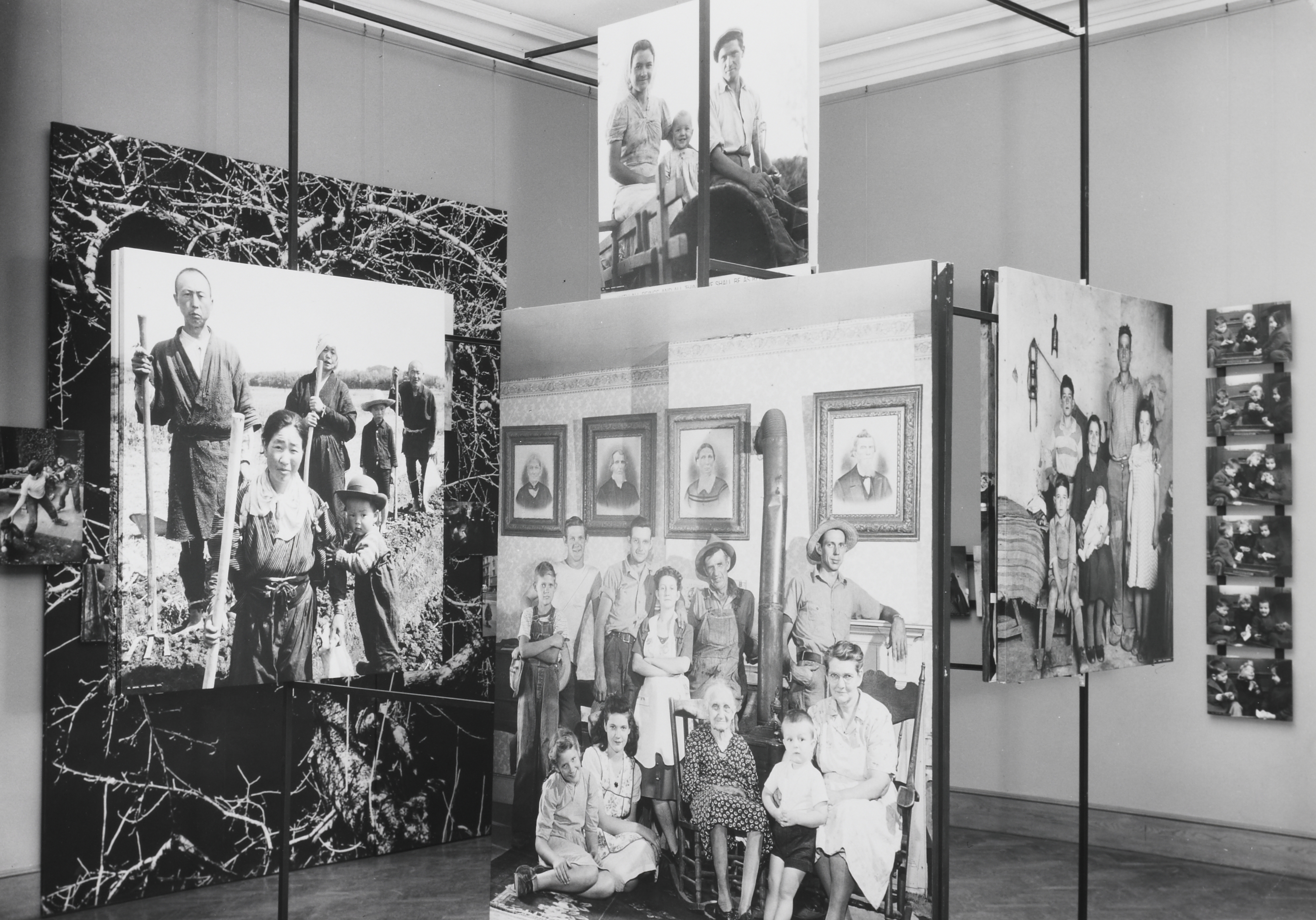
The exhibition’s 503 photographs were displayed on a deliberately modern—and flexible—scaffolding design.
By Dan Dennehy, senior photographer and head of Visual Resources at Mia
Many baby boomers will remember The Family of Man, MoMA’s epic coming-out party for humanistic photography, a voyeur’s view of life on Earth in the decisive postwar moment. It was a cinematic global group hug conceived to illustrate our essential oneness and to soothe a generation anxiously adjusting to the new political order that emerged in the Atomic Age. Its archetypal images of quotidian human endeavor reflected and encouraged an egalitarian optimism that belied the tensions of the times.
The exhibition opened at the MIA on June 22, 1955, exactly 60 years ago, the first stop on a blockbuster world tour—37 countries on six continents—after its debut at the Museum of Modern Art in New York. It included works by icons of the medium such as Henri Cartier-Bresson, Dorothea Lange, Robert Frank, and W. Eugene Smith. Edward Steichen, the famed Pictorialist photographer and MoMA curator, embraced the mid-century aesthetic. He mounted the show—a dizzying array of 503 black-and-white photographs, from postcard to billboard size—on a maze of free-standing structures designed by the Modernist architect Paul Rudolf. The result was a larger than Life photo essay that blurred the lines between the viewers and the world’s people pictured on screens, a prelude to the television sets that would soon dominate American homes.
Ironically, given the show’s decidedly masculine title, the only photos of The Family of Man’s six-week run at the MIA were taken at a private event for a group of women, apparently on a break from their own families. They parade past the vivid scenes of birth, death, love, war, feast, and famine with looks ranging from shock to nonchalance. Some smile for the camera, some sip tea, some seem unsure what to think. Perhaps the younger ones, especially, are dreaming of a life in other places, playing roles far different from the regimen of post-war American family life.
The Family of Man, for all its mythologizing of a picture-perfect world, did help us look beyond the picket fences of small-town America at something bigger, anticipating the social changes that would follow when the tour ended in 1963. And the photographs themselves have stood the test of time, etched into our collective consciousness as portraits of who we are as a species, you might even say a family.


